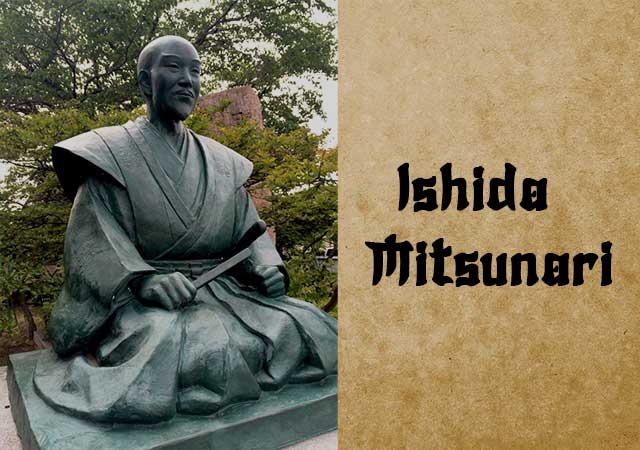
In 1560, Ishida Mitsunari was born in Ishida Village, Omi, located in Shiga Prefecture. The path of Mitsunari's destiny intersected with Toyotomi Hideyoshi during military training near Hideyoshi's Nagahama Castle when Mitsunari was just 13 years old. Displaying exceptional service, Mitsunari offered three cups of tea to the thirsty lord.
The first cup, served in a large chawan teacup, contained an unusually generous portion of warm green tea. Hideyoshi found the amount and temperature perfectly satisfying, consuming it all at once. The second cup, served in the same chawan, was slightly hotter and offered in a reduced quantity. Hideyoshi, now at ease, savored this cup more leisurely. The third cup, presented in a smaller bowl and considerably hotter than the previous two, allowed Hideyoshi to enjoy it in a composed manner. Impressed by Mitsunari's skill, Hideyoshi appointed him to his staff, initiating a loyal service that would be duly rewarded.
In 1585, at the age of 25, Mitsunari assumed the role of Jibu-shosuke, one of the two chief commissioners reporting to the administrator overseeing genealogies, marriages, funeral rites, imperial tombs, theaters, and music. Additionally, Mitsunari took charge of diplomatic matters, overseeing the reception of foreigners, with a notable influx of Spanish and Portuguese visitors engaged in trade and proselytizing. Renowned for his mathematical prowess, Mitsunari was entrusted with leading the well-known "sword hunt" initiative launched by Hideyoshi. This initiative aimed to disarm the civilian population, promoting peace and stability.
He received a stipend of 186,000 koku and the castle of Sawayama in Omi. Despite his adept administrative skills, his elevated position as one of the five Bugyo commissioners was not a result of martial merit or heroic deeds; rather, it stemmed from his proficiency in the tea ceremony. This, coupled with his bold and aloof demeanor, led to personal conflicts with other retainers.
Upon Mitsunari's return from accompanying General Ukita Hideie on the Korean campaign, he discovered that his senior retainer status held no sway with the establishment of the Tairo, the Council of Five Elders. This council was formed to govern in place of Hideyoshi’s young son and heir, Hideyori, and was headed by Tokugawa Ieyasu, appointed by Hideyoshi himself. After Toyotomi Hideyoshi's death in 1598, Mitsunari realized that his lord, young Hideyori, was being supplanted by the Tokugawa.
Ieyasu's actions disrupted the peace established by the Toyotomi, leading to the nation's division into two factions, East and West. The culmination of this unrest was the pivotal Battle of Sekigahara on October 21, 1600. Despite having numerical superiority, higher ground, and better strategic positions, the Western forces led by Ishida Mitsunari were defeated. The victor was Tokugawa Ieyasu, compelling Mitsunari to flee towards the end of the seven-hour battle.
In the aftermath of the battle, Tanaka Yoshimasa, once a friend of Mitsunari, received orders from Ieyasu to locate the Western leader. After two days of searching, he apprehended Mitsunari in the village of Furuhashi, just outside of Inokuchi Mura (Toyama Prefecture). Mitsunari had sought refuge in the Hokekyo Sanju-in Temple area, as the head priest had been one of his childhood teachers.
Confronted by an exhausted and frightened Mitsunari, the kind priest inquired, "What is it that you need?" anticipating a response related to food, water, and shelter. However, Mitsunari, as defiant as ever, declared, "Ieyasu's head!" The priest then concealed the fugitive in a rock cave behind the temple. When Tanaka eventually discovered him, Mitsunari still wore the clothes he had donned under his armor during the battle. To Tanaka's relief, his former friend surrendered quietly, handing over the wakizashi presented to him by Hideyoshi as a mark of defeat. Mitsunari, fatigued, wet, cold, and afraid, had not eaten properly for days and was suffering from dysentery. The usually proud and arrogant lord was captured and handed over to the Eastern allies in a pitiable state.
Facing Ieyasu at the ruins of Otsu Castle, Ishida Mitsunari was reproached for causing immense bloodshed. Mitsunari angrily retorted that it was Ieyasu who had initiated the war by turning against the Toyotomi. He further stated that he had resisted the temptation to take his own life because he wanted his death to be an additional burden on Ieyasu.
The trio comprising Ishida Mitsunari, Ankokuji Ekei, and Konishi Yukinaga, once captured, endured public exhibition in Osaka with metal rings around their necks. They were paraded through city streets in a large open crate. Mitsunari was compelled to loudly proclaim his alleged crimes, detailing the troubles he had caused to intensify their humiliation. Subsequently, they faced further public ridicule in Kyoto. On November 6, the trio was executed at Rokujo-ga-hara, the dry riverbed of the Kamo River in Kyoto, and their heads were displayed beside Sanjo Bridge in the city.
Despite his dire circumstances, Mitsunari maintained hope. A notable anecdote recounts that, en route to the execution grounds, he was offered a persimmon but declined, citing concerns about its impact on his digestion. Konishi, his fellow condemned, remarked that considering their imminent execution, digestion was hardly a priority. Mitsunari responded, stating, "As one can never tell how things are going to turn out, one must at all times take care of one's health."
In 1907, Mitsunari's skull was discovered in Kyoto's Sangen-in temple. Dr. Nagayasu Shuichi, former Chief of Engineering at the Tokyo National Research Institute of Police Sciences, used the skull as a base to recreate Mitsunari's facial features in the 1980s. This endeavor was undertaken at the request of Mitsunari's descendant, Mr. Ishida Takayuki. The reconstruction revealed an elongated head and a pronounced defect in Mitsunari's teeth, causing them to bow outward. Dr. Ishida Tetsuro, unrelated to Dr. Nagayasu, later studied the rest of Mitsunari's skeleton at the Kansai Idai Medical University.
See also
-
Honda Masazumi
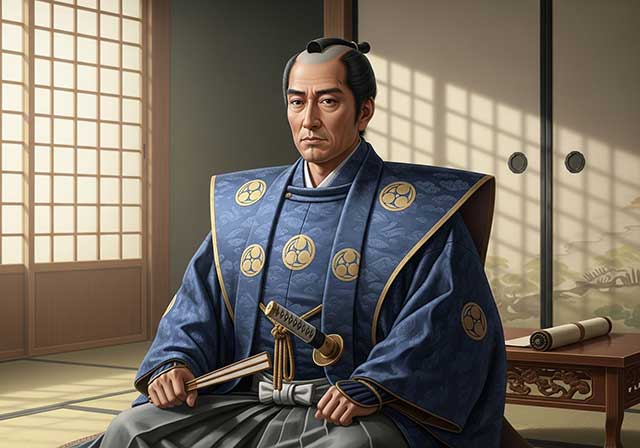
Masazumi was the eldest son of Honda Masanobu. From a young age, he served Tokugawa Ieyasu alongside his father, taking part in the affairs of the Tokugawa house and gradually gaining experience in both military and administrative matters. At the decisive Battle of Sekigahara in 1600, Masazumi was part of the core Tokugawa forces, a clear sign of the high level of trust Ieyasu placed in him. After the campaign ended, he was given a highly sensitive assignment—serving in the guard of the defeated Ishida Mitsunari, one of Tokugawa’s principal enemies—an obligation that required exceptional reliability and caution.
-
Hojo Shigetoki
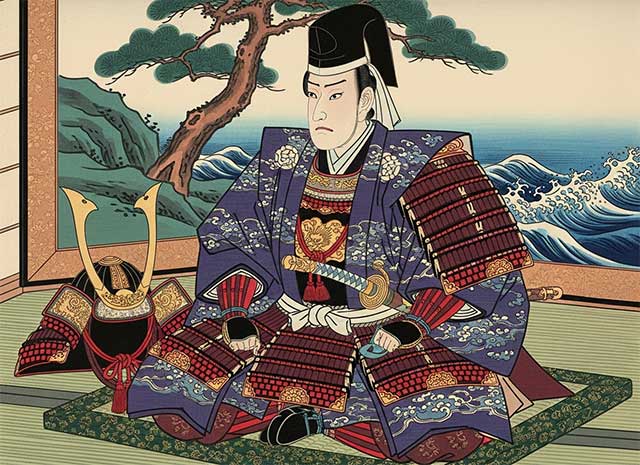
Hōjō Shigetoki, the third son of Hōjō Yoshitoki, was still very young—only five years old—when his grandfather Tokimasa became the first member of the Hōjō clan to assume the position of shogunal regent.
-
Hojo Masako

Masako was one of the most influential and powerful political figures of the era of military rule in Japan. She was the daughter of Hōjō Tokimasa and the wife of Minamoto no Yoritomo.
-
Hojo Soun

Hōjō Nagaudji was one of the prominent military commanders of the late Muromachi period. Thanks to a successful marriage alliance and skillful use of political intrigue, he managed to concentrate full power over the provinces of Suruga, Izu, and Sagami in his own hands. His origins remain unclear, but there is a possibility that he was connected to the Heiji clan of Ise Province, since early in his life he bore the name Ise Shinkurō.
-
Hirano Nagayasu
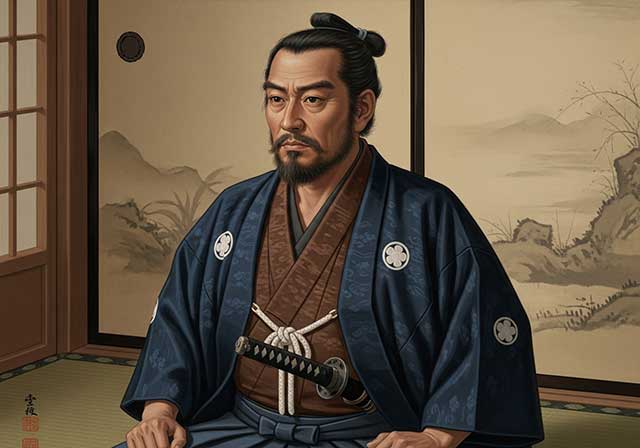
From an early age, Hirano Nagayasu was in the service of Toyotomi Hideyoshi, since Nagayasu’s father, Nagaharu, had faithfully served Hideyoshi during Hideyoshi’s own childhood. Thus, the connection between the Hirano family and the Toyotomi house was established long before Hideyoshi’s rise to power and took the form of hereditary vassal loyalty.
-
Hattori Hanzo

Hattori Hanzō, also known by the name Hattori Masanari, was the third son of Hattori Yasunaga, a samurai who served the Matsudaira clan. In his childhood he was called Tigachi Hanzō. His father held the highest rank in the shinobi hierarchy, that of jōnin, and Hanzō followed in his father’s footsteps, choosing the same path.
-
Hatano Hideharu
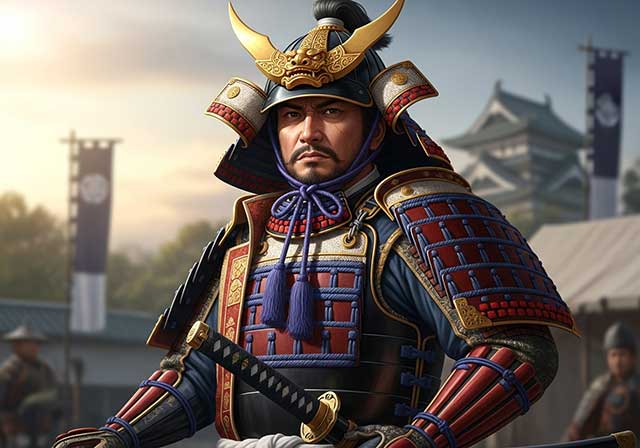
Hatano Hideharu was the eldest son of Hatano Harumichi, the head of the Hatano clan. However, in childhood he was adopted by his uncle, Hatano Motohide, and was therefore formally regarded as Motohide’s heir. From the time of Hideharu’s grandfather, Hatano Tanemichi, the Hatano clan had been a vassal of the powerful Miyoshi house, which exerted considerable influence over the Ashikaga shoguns and effectively shaped the political situation in the region. Early in his career, Hideharu served Miyoshi Nagayoshi and, judging by surviving records, held a fairly high position within his lord’s hierarchy, as he was among the select group invited to the enthronement ceremony of Emperor Ōgimachi in 1557.
-
Fukushima Masanori
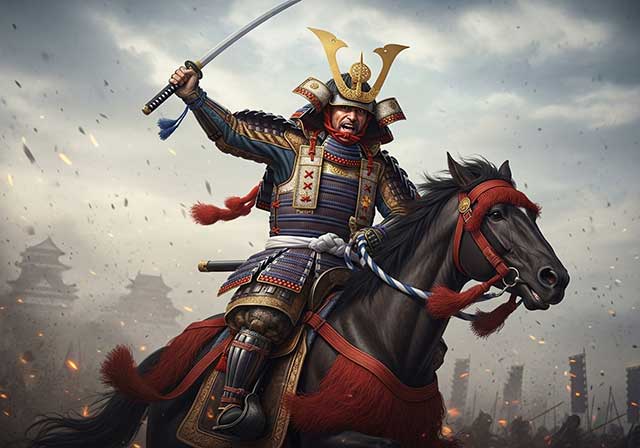
Fukushima Masanori, a samurai from Owari Province, served Toyotomi Hideyoshi and took part in the Battle of Shizugatake, where he distinguished himself so conspicuously that he was awarded the honorary title of one of the “Seven Spears of Shizugatake,” meaning the warriors who had shown the greatest valor in the battle. As a reward for his courage and martial prowess, he was granted land producing an income of 5,000 koku of rice.

